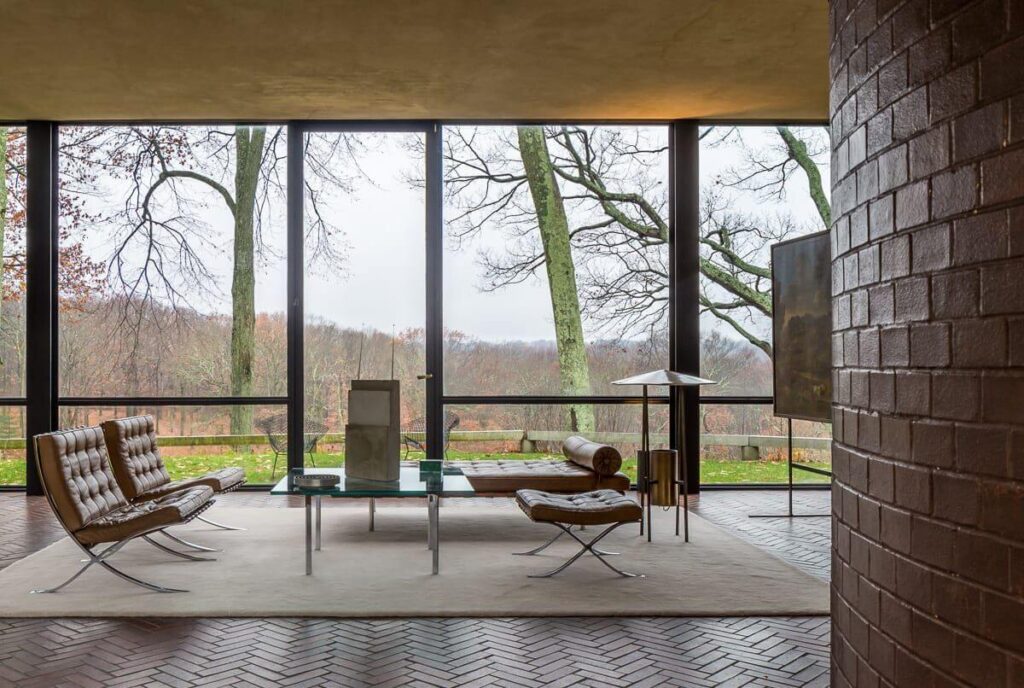Philip Johnson (b. 8 july 1906 in Cleveland, Ohio)
The journey started exactly 3 months ago, and so far it has been an exciting ride through the history of steel in construction, design & art.

© Simon Garcia
After graduating from Harvard University in 1930, he became the Director of he Department of Architecture at the Museum of Modern Art in New York (MoMa). In 1932 he published ‘International Style: Architecture since 1922.’, an influential publication that defined and introduced the principles of International Style. In 1940 he returned to Harvard to study architecture under Walter Gropius and Marcel Breuer. In 1947 he ran an exhibition on Ludwig Mies van der Rohe.
© Simon Garcia
The influence of Mies is evident in the design of his own house, the Glass House. It was constructed entirely of sheets of quarter-inch glass, divided and supported by black steel pillars with no interior walls. A small brick cylinder containing a bathroom, fireplace and other utilities was the only enclosed area. Most of the furniture came from Johnson’s New York apartment, designed in 1930 by Mies van der Rohe

Image © David Shankbone
In 1958, Johnson collaborated with Mies to design the Seagram Building in New York. Later on, he would move away from modernism to become one of the leading postmodernism architects with the design of the AT&T Building (1978-82) in New York.
About the Author:

Bruno Dursin – Managing Director at Believe in Steel. Bruno has more than 30 years of experience in promoting steel & steel solutions. His clients benefit from his extensive network within the building industry.






